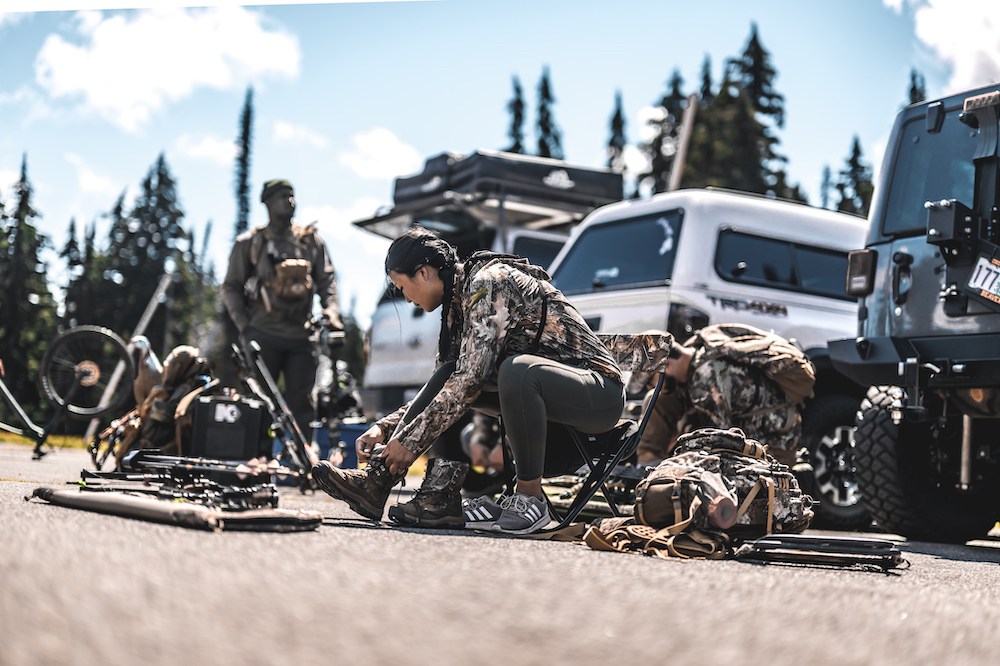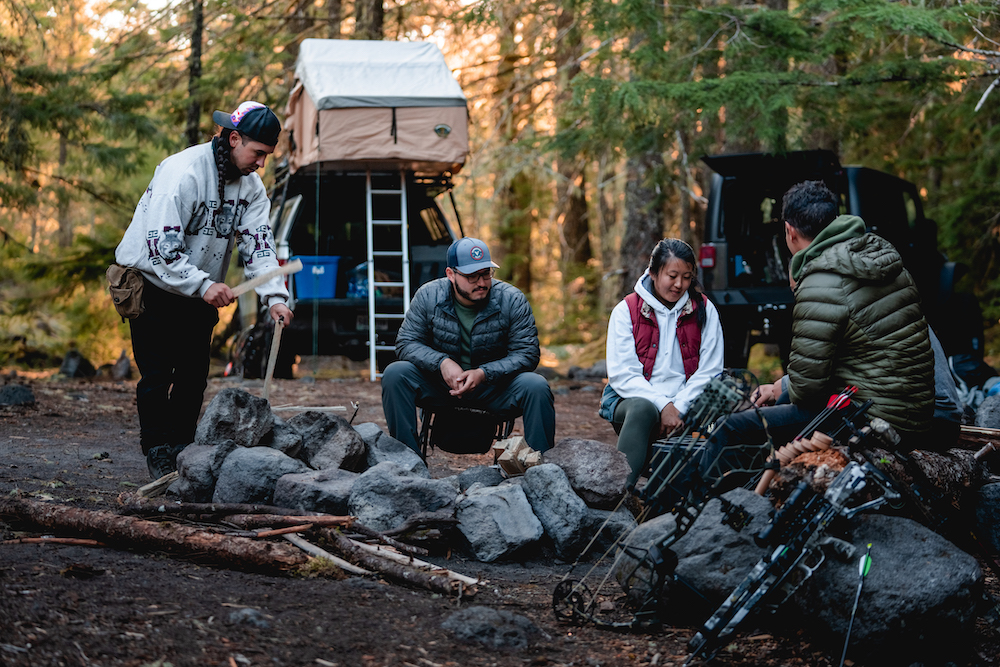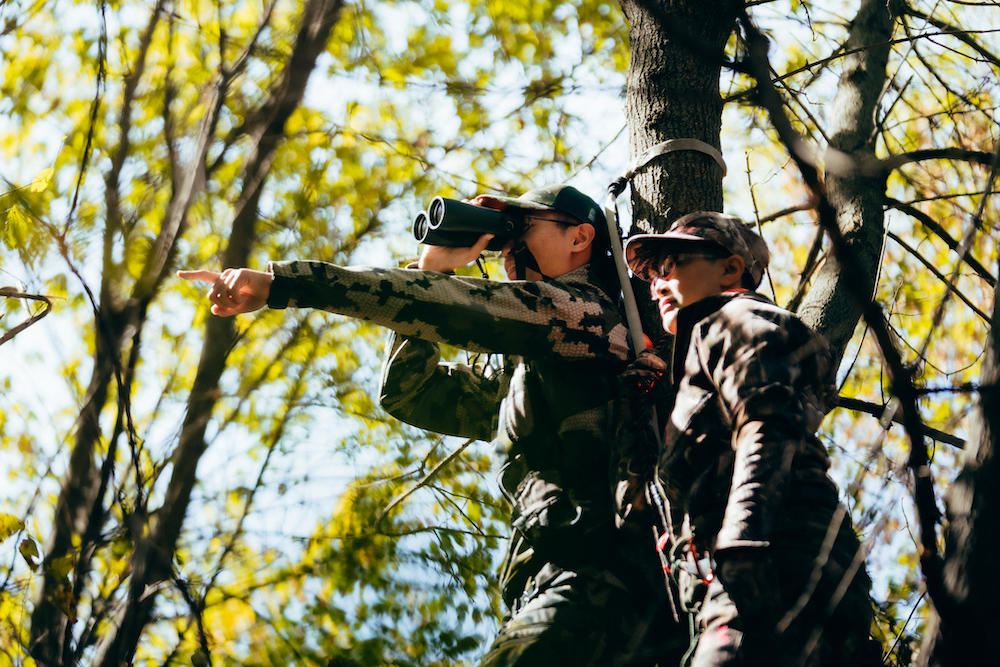Embarking on your first archery hunt out West can be an exhilarating experience. The rugged landscapes of the Rocky Mountain West combine breathtaking scenery and bountiful hunting opportunity for those seeking adventure. Whether you’re chasing antelope, mule deer or elk, you need to be well prepared for the unique challenges of your first Western bowhunt. Here’s how to get ready.
Mountain landscapes are known for challenging terrain that demands stamina and endurance from bowhunters. It is crucial to start a fitness regimen well in advance of your hunt, focusing primarily on cardio exercises and pack training, otherwise known as rucking. Extended hikes with a backpack weighted with at least 40 pounds will help simulate the conditions you’ll encounter in the field, strengthening your muscles and improving your overall fitness. Incrementally increase your pack weight until you can comfortably hike with 80 pounds (equivalent to two bags of water softener salt), which is on par with what to expect when packing a quartered animal off the mountain.
Regardless of species or terrain, physical preparation is critical. Antelope, for instance, live in some of the flattest country in the west. While this might seem like a piece of cake, creeping into bow range on your knees or belly-crawling the final distance can be exhausting. The more prep work you put in before your hunt, the more you’ll enjoy it.

Make sure you wear your boots before the hunt to break them in. Photo Credit: BU
The importance of comfortable and well-fitted hunting boots cannot be overstated. Break in your boots by wearing them while pack training to prevent blisters, sore feet and discomfort during the hunt. Invest in high-quality boots specifically designed for rugged terrain, and make sure they offer adequate ankle support. Leather boots are generally heavier than synthetic ones but are durable and made to last. Boots made from synthetic material, on the other hand, are light and fast, designed for covering ground quickly. Regardless of material, choose a boot with a flex rating that matches the type of terrain you intend to hunt in. Flex is typically rated on a one-to-five scale, with one being the lightest and five being the stiffest. Stiff boots are ideal for steep country when support is critical to propel you up the mountain, whereas flexible boots are tailor made for flatter country.
Socks are vital to keeping your feet comfortable. Polypropylene liners wick moisture from your feet, helping them stay dry when sweating. Merino wool is a unique material that maintains warmth even when wet. Try adding merino socks over polypropylene liners to add insulation and stay dry.

Arrive early and ascend the mountain in segments. Photo Credit: BU
If you are hunting at a higher elevation than you are accustomed to, it’s essential to allow ample time for acclimatization. Arrive early at your hunting destination to give your body time to adjust to the thinner air. Ascend gradually, and avoid rapid elevation gains. Ascending to no more than 9,000 feet in one day is recommended to minimize the risk of altitude sickness and ensure peak physical performance during your hunt.
It’s important to maintain healthy eating habits during the hunt, being especially mindful of potassium intake when hunting at high elevations. Potassium loss is a common result of dehydration, which can lead to cramping and poor sleep. It’s also important to know the symptoms associated with altitude sickness. If you find yourself feeling sick, adjusting accordingly can save your hunt.
In arid areas, locating and accessing water sources is key. Identify potential water sources such as streams, rivers or lakes in your hunting area and plan your routes accordingly. Save these spots on a mobile mapping application, but consider backup plans if the water source is dry upon arrival. Hydrate consistently throughout the day to maintain your energy levels and stay focused. Consider carrying a reliable water filtration device to ensure access to safe drinking water, especially if you are spending extended periods away from established water sources.

Bring binoculars or spotting scopes. Photo Credit: BU
Quality optics and an understanding of basic glassing techniques can save miles on your feet and help you spot more game. Binoculars are lightweight, portable and great for glassing on the go; spotting scopes can help hunters pick apart the landscape from extreme distances. Whether you’re using a spotting scope or binoculars, a tripod will help you stay steady as you pick apart the landscape. Today’s tripods are lightweight and packable, and if you thought they were exclusively for spotting scopes, think again. Mounting adapters allow hunters to use binoculars on a tripod, giving them a wider field of view to make initial scans of an area. Using a tripod allows the hunter to glass longer without the annoying instability associated with hand-holding binoculars. As a result, you’ll be able to glass longer and dissect small details without getting fatigued.
Traveling for a Western bowhunt is a rare treat, and something that’ll occupy your mind from the moment you leave until you return. Whether you’re shooting on a camera or a phone, take many photos. And don’t stop there. Invest in a physical, printed look book to occasionally relive your hunt on a rainy day. If you’re feeling ambitious, document your hunt in a journal. Experiences come and go, but the memories made and camaraderie of sharing hunting camp with friends and family last forever. Bottle these memories in something more tangible than a scattered assortment on your phone’s camera roll. You’ll carry them with you through life, and, if you’re like me, the photos and stories will prove to be the true trophies earned from your Western bowhunt — not the full freezer or antlers on the wall.